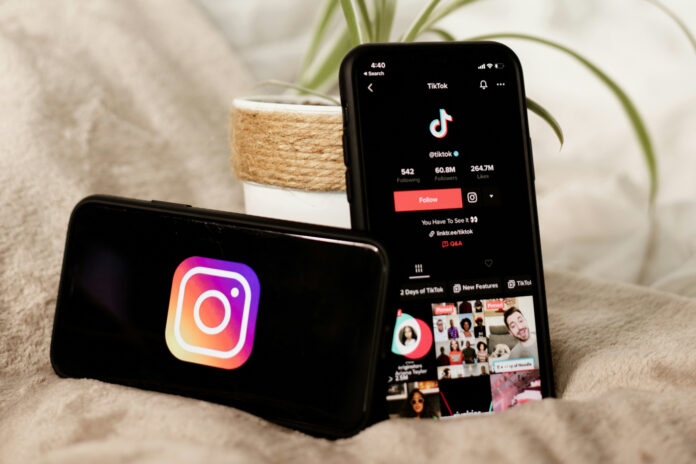A successful cannabis social media strategy requires more than just regular posting. It’s a careful balance of consistency, creativity, and strict compliance with platform rules. While all industries face some level of restriction, cannabis brands must navigate especially strict social media guidelines alongside ever-changing algorithms and audience behaviors.
If you’re asking, “How many posts per week do I need to grow my cannabis brand on social media?” — there’s no one-size-fits-all answer. While posting three to seven times per week makes sense for some business-to-consumer (B2C) brands, those working on the business-to-business (B2B) side require a different cadence.
A strong social media strategy isn’t defined by the number of posts per week. Instead, it’s about delivering engaging, high-quality content that resonates with a target audience. Whether focused on building brand awareness, growing a community, or establishing a reputation as a thought leader, the key lies in adaptability and continuous optimization.
Let’s take a look at what some experts believe are the most effective ways to determine publishing frequency while maximizing engagement and growth.
Know where your cannabis audience hangs out (and what they expect)
Successful social media marketing begins with understanding where your audience congregates. Data from the Pew Research Center indicates YouTube and Facebook remain “by far” the most dominant platforms among adults in the United States, with younger demographics gravitating toward Instagram and TikTok.
But it’s not just about showing up on the right platform. Each social network has its own tone, content expectations, and user behavior, which means your cannabis content strategy must adapt accordingly:
- YouTube is ideal for long-form, educational content — think tutorials, product reviews, and storytelling.
- Facebook supports community-building through discussion-driven posts, personal updates, and brand storytelling.
- Instagram is visual-first, favoring polished aesthetics, behind-the-scenes glimpses, and product lifestyle shots.
- TikTok leans into fast-paced, humorous, or trend-driven content — especially appealing to Gen Z cannabis consumers.
A ten-minute tutorial about joint-rolling may kill it on YouTube but fall flat on TikTok. That’s why platform-specific cannabis content is essential for maximizing reach and engagement.
Use analytics to measure what’s working — and what’s not
Pay close attention to the tone of each platform, what’s going viral, and what’s resonating with competitors in your space. Fortunately, social media analytics tools, which are provided with many business social accounts, automatically track engagement and other metrics. That data can help identify what’s performing well and what needs adjusting.
Pay close attention to:
- Engagement metrics (likes, comments, shares, saves).
- Reach and impressions.
- Follower growth over time.
- Engagement rate (engagement ÷ impressions).
“You know a brand’s social media strategy is working when metrics like followers, engagements, and impressions rise steadily month over month,” said Kavya Sebastian, associate director of brand strategy at Cannabis Creative Group. “We specifically track engagement rate as a percentage of impressions to gauge effectiveness. If this metric remains steady or grows over time, the posting frequency and content strategy are working.”
Just don’t expect success overnight. “It takes at least three months of consistency to see meaningful results,” she added. “Social media moves fast, audiences are fickle, and algorithms are updated often. That’s why patience and persistence are key” to cannabis content success.
Tailor your strategy: social media for B2B vs. B2C cannabis brands
One of the biggest factors in cannabis social media success is knowing your audience — and whether you’re marketing B2B or B2C. The content that works for cannabis consumers often looks very different from what resonates with other businesses.
For B2C cannabis brands:
- Focus on lifestyle content, relatable storytelling, and user-generated content (UGC).
- Prioritize visual-first platforms like Instagram, TikTok, and X.
- Post 3–7 times per week to maintain visibility and engagement.
“Our B2C content is all about relatability and lifestyle,” said Alice and Clark Campbell, the influencer duo behind That High Couple. “It’s all about creating an emotional connection and speaking to consumers’ lifestyles and values with authenticity. We make sure the content is engaging and feels natural.”
For B2B cannabis brands:
- Lean into thought leadership, case studies, and industry insights.
- Focus on LinkedIn and industry newsletters.
- Post 2–3 times per week with high-value, strategic content.
According to Pulp + Wire founder and Creative Director Taja Dockendorf, B2B cannabis brands should prioritize:
- LinkedIn for thought leadership.
- Email newsletters for consistent outreach.
- Facebook for targeted industry discussions.
“B2B cannabis brands should focus on LinkedIn and regulatory insights,” she said. “That kind of content is more impactful than frequent, low-value posts.”
For both B2B and B2C, the goal is the same: build trust, deliver value, and tailor your cannabis content strategy to your audience and platform.
Play it smart: staying compliant on restrictive social platforms
Cannabis social media compliance is one of the biggest challenges brands face today. Platforms like Instagram, Facebook, and TikTok enforce inconsistent and often vague content restrictions that can result in shadowbanning, demonetization, or outright content removal.
To reduce risk, brands must avoid:
- Direct sales language or promotions.
- Explicit product claims (especially health-related).
- Visuals that show consumption or close-ups of cannabis products.
- Flagged keywords (e.g., “weed,” “THC,” “stoned,” etc.).
“I used to be able to showcase the plant, but after too many deletions, I’ve had to adjust my content,” said influencer Koala Puffs. “It sucks, because I will have people ask me to review a certain strain or product and I can’t even show any close-ups. It just adds a lot of layers of difficulties when you’re trying to connect with the right audience.”
Influencers have gotten creative when it comes to the words and phrases they use to avoid content flags. “Gardening” and “beekeeping” are popular substitutions for “cannabis cultivation,” for example. But this also comes with the risk of confusing audience members who may not be familiar with the most recent euphemisms.
“We’ve had to get creative with how we phrase things, what we show on camera, and where we post,” the Campbells said. “Cannabis content can get shadowbanned, demonetized, and removed on a regular basis, which makes it tough to grow organically. Diversifying across platforms and staying flexible with our content strategy has been crucial.”
To stay compliant:
- Keep a running list of restricted keywords.
- Educate your social team (or influencer partners) on safe practices.
- Focus on educational, lifestyle, or entertainment-based content.
- Explore cross-posting to less-restricted platforms like YouTube or LinkedIn.
Staying compliant doesn’t mean being boring; it means being creative within the limits. Smart brands treat restrictions as a branding opportunity, building loyal followings through clever messaging and subtle storytelling.
Authenticity over ads: building real cannabis brand loyalty online
Authenticity is at the heart of social media success — especially for younger audiences who increasingly crave brands that feel relatable and raw. Consumers are adept at detecting overly promotional or insincere content, so brands must work to build genuine relationships with their audience.
To build lasting loyalty:
- Respond to comments and messages.
- Prioritize shareable, user-generated content (UGC).
- Maintain a brand voice that feels personal, not corporate.
- Avoid turning your feed into a wall of ads.
“If it’s not something we’d actually use and enjoy, we don’t promote it,” the Campbells said. “We make sure our feed doesn’t feel like one big ad by mixing in plenty of organic content — behind-the-scenes moments, fun challenges, travel vlogs, etc. Our audience follows us for us, so we always keep that at the heart of everything, whether it’s sponsored or not.”
Koala Puffs is similarly fastidious when it comes to sponsored content. Revenue isn’t worth the hassle if the sponsored posts alienate her audience.
“I try to keep all my content as organic as possible,” she said. “If I was already thinking about doing a skit with a bong, then I think about what current sponsors I’m working with already and how I can include them in my idea. Sometimes, we pitch the idea to the brand and they’ll either love it or ask me to make something else. When they ask me to make something else, I make the skit idea anyway and just don’t include any sponsors.”
The takeaway? For cannabis brands and creators alike, trust trumps transactions. Stay grounded in your brand identity, and audiences will stick around — sponsored or not.
Your followers know best: Use feedback to guide content strategy
Not sure what to post — or when? Your best insights come directly from your followers. Cannabis audience engagement is an ongoing conversation, and the smartest brands actively gather feedback to fine-tune their social media content strategy.
Ask your audience directly:
- Run polls on Instagram Stories.
- Use question boxes, comment prompts, or emoji sliders.
- Send short surveys via email or DMs.
- Start conversations in captions — and actually reply.
Beyond direct interaction, third-party analytics tools can reveal when your audience is most active, which types of posts drive the most engagement, and which platforms are best suited to your niche.
Ask yourself:
- Are followers most active in the morning, afternoon, or late at night?
- Do they engage more with educational content, product spotlights, or behind-the-scenes stories?
- Do they prefer short-form videos or longer-form written posts?
The more insight you gather, the easier it is to craft a cannabis content strategy that keeps your audience engaged — and coming back for more.
One size doesn’t fit all: build platform-specific cannabis content plans
The best cannabis content strategy isn’t about posting more; it’s about posting smarter. Platform-specific cannabis marketing means tailoring your frequency, format, and engagement tactics to fit both your goals and your audience.
Posting daily may boost visibility for some brands, but if content feels rushed or low-value, engagement can drop. On the flip side, posting too infrequently can hurt momentum. The key? Find your sweet spot — a balance between consistency and quality.
“We’ve found the most sustainable success with brands posting three to five times per week, as long as the content remains high-quality and strategic,” said Cannabis Creative Group’s Sebastian.
Just as important: Don’t “post and ghost.”
- Respond to comments and DMs.
- Interact with customers and relevant accounts.
- Use features like Instagram Stories, Lives, and polls to deepen engagement.
Whether you’re focusing on Instagram for cannabis B2C marketing or LinkedIn for B2B outreach, a platform-specific strategy will drive better results than trying to use the same approach everywhere.
Optimize continuously: test, analyze, and adjust your social strategy
Social media strategies aren’t static. They require a cycle of testing, analyzing, and optimizing. What works today might flop tomorrow, especially as platform algorithms shift and audience preferences evolve.
Smart cannabis marketers continuously experiment with:
- Different content formats (videos, carousels, polls, etc.).
- Varying posting times and days.
- New calls to action, hashtags, or platform features.
- Cross-platform performance comparisons.
One standout example is Flower by Edie Parker, a luxury cannabis brand that blends high-end design with premium cannabis products. Unlike other brands, Flower by Edie Parker operates at the intersection of cannabis and couture, using bold, vibrant visuals and editorial-style content that wouldn’t feel out of place in a high-fashion magazine.
This approach serves two key functions: it allows the brand to remain compliant with strict advertising regulations while also appealing to a highly specific niche — cannabis consumers who appreciate luxury, design, and fashion-forward branding. By leveraging the founder’s roots in the fashion industry, the brand cultivated a distinct visual identity that sets it apart from competitors in the space.
The brand focuses heavily on Instagram and TikTok, where it uses a blend of striking product photography, influencer collaborations, and engaging lifestyle content to connect with consumers. The brand’s Instagram account has a strong following, and they keep their TikTok content fresh with creative, trendy videos.
“Engagement rates, including likes, comments, shares, and saves, indicate whether your content is resonating, while reach and impressions reveal if your posts are being seen,” said Pulp + Wire’s Dockendorf. “If follower growth stagnates, engagement drops, or website clicks decline, it’s a sign that posting frequency or content strategy needs adjustment, making regular performance audits essential for optimization.”
Stay consistent to stay relevant — without burning out
In the world of cannabis social media marketing, consistency isn’t just a best practice — it’s essential. A reliable posting cadence keeps your brand top of mind, builds audience trust, and signals to the algorithm that your content deserves visibility.
That doesn’t mean you need to post every day. But it does mean sticking to a rhythm that’s realistic for your team and rooted in your audience’s needs.
“It’s been a lot of trial and error,” said Alice Campbell of That High Couple. “We started by looking at what worked best for our audience and our own workflow. In the beginning, we posted whenever we could, but over time we realized consistency was key. It’s about finding that sweet spot where we’re engaging our audience without burning ourselves out.”
To banish inconsistency:
- Build a manageable cannabis content calendar.
- Align your schedule with internal capacity and audience behavior.
- Track engagement patterns and adjust as needed.
Sebastian emphasized content frequency should match both platform and audience type. She advised:
- B2C cannabis brands thrive on Instagram, TikTok, and X, where frequent, visually engaging posts drive organic discovery.
- B2B brands find more success with LinkedIn, Facebook, and industry newsletters, where depth and thought leadership matter most.
“Inconsistency is the killer of all things social media.” Sebastian warned. “Posting six times in one week and then only once the next will confuse your audience and disrupt momentum.”
Bottom line? A sustainable cannabis social media strategy is one that you can actually stick to. Choose quality over quantity, optimize as you go, and commit to showing up — week after week.













